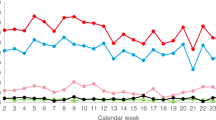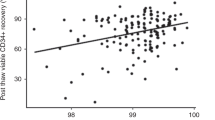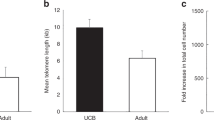Abstract
The Graft Processing subcommittee of the Worldwide Network for Blood and Marrow Transplantation wrote this guideline to assist physicians and laboratory technologists with the setting up of a cell processing laboratory (CPL) to support a hematopoietic stem cell transplant program, thereby facilitating the start-up of a transplant program in a new location and improving patient access to transplantation worldwide. This guideline describes the minimal essential features of designing such a laboratory and provides a list of equipment and supply needs and staffing recommendations. It describes the typical scope of services that a CPL is expected to perform, including product testing services, and discusses the basic principles behind the most frequent procedures. Quality management (QM) principles specific to a CPL are also discussed. References to additional guidance documents that are available worldwide to assist with QM and regulatory compliance are also provided.
This is a preview of subscription content, access via your institution
Access options
Subscribe to this journal
Receive 12 print issues and online access
$259.00 per year
only $21.58 per issue
Buy this article
- Purchase on Springer Link
- Instant access to full article PDF
Prices may be subject to local taxes which are calculated during checkout
Similar content being viewed by others
References
Worldwide Network for Blood and Marrow Transplantation (WBMT). www.wbmt.org.
21 Code of Federal Regulations Part 1271. www.accessdata.fda.gov/scripts/cdrh/cfdocs/cfcfr/CFRSearch.cfm?CFRPart=1271.
Regulation(EC) No 1394/2007 of the European Parliament and of the Council of 13 November 2007 on advanced therapy medicinal products and amending Directive 2001/83/EC and Regulation (EC) No 726/2004.
Burger SR . Design and operation of a current good manufacturing practices cell engineering laboratory. Cytotherapy 2000; 2: 11–122.
Schwartz J, Padmanabhan A, Francis R, Lindenberger M . Mobilization and collection of peripheral blood hematopoietic progenitor cells. In: McLeod B, Szczepiorkowski M, Weinstein R, Winters J (eds). Apheresis Principles and Practice, 3rd edn. AABB Press: Bethesda, MD, 2010.
Matsumoto N, Yoshizawa H, Kagamu H, Abe T, Fujita N, Watanabe S et al. Successful liquid storage of peripheral blood stem cells at subzero non-freezing temperature. Bone Marrow Transplant 2002; 30: 777–784.
Antonenas V, Garvin F, Webb M, Sartor M, Bradstock KF, Gottlieb D et al. PBSC harvests, but not BM, show temperature-related loss of CD34 viability during storage and transport. Cytotherapy 2006; 8: 158–165.
McCullough J, Haley R, Clay M, Hubel A, Lindgren B, Moroff G . Long-term storage of peripheral blood stem cells frozen and stored with a conventional liquid nitrogen technique compared with cells frozen and stored in a mechanical freezer. Transfusion 2010; 50: 808–819.
Costa R, Khattab M, Gilmore GL, Sahovic EA, Miller SM, Rossetti JM et al. Viability and potency of hematopoietic progenitor cells after prolonged cryopreservation at –80 ° C. Acta Haematol 2011; 126: 99–102.
Makino S, Harada M, Akashi K, Taniguchi S, Shibuya T, Inaba S et al. A simplified method for cryopreservation of peripheral blood stem cells at −80 degrees C without rate-controlled freezing. Bone Marrow Transplant 1991; 8: 239–244.
Watts MJ, Sullivan AM, Ings SJ, Barlow M, Devereux S, Goldstone AH et al. Storage of PBSC at -80oC. Bone Marrow Transplant 1998; 21: 111–112.
Rowley SD . Hematopoietic stem cell cryopreservation: a review of current techniques. J Hematother 1992; 1: 233–250.
Rowley SD, Feng Z, Chen L, Holmberg L, Heimfeld S, MacLeod B et al. A randomized phase III clinical trial of autologous blood stem cell transplantation comparing cryopreservation using dimethylsulfoxide versus dimethylsulfoxide with hydroxyethylstarch. Bone Marrow Transplant 2003; 31: 1043–1051.
Cabezudo E, Dalmases C, Ruz M, Sanchez JA, Torrico C, Sola C et al. Leukapheresis components may be cryopreserved at high cell concentrations without additional loss of HPC function. Transfusion 2000; 40: 1223–1227.
Sanchez-Salinas A, Cabanas-Perianes V, Blanquer M, Majado MJ, Insausti CL, Monserrat J et al. An automatic wash method for dimethylsulfoxide removal in autologous hematopoietic stem cell transplantation decreases the adverse effects related to infusion. Transfusion 2012; 52: 2382–2386.
Areman E, Deeg HJ, Sacher RA (eds). Bone Marrow and Stem Cell Processing: A Manual of Current Techniques. FA Davis Co: Philadelphia, PA, USA, 1992.
Leemhuis T, Sacher R . Hematopoietic progenitor cells: biology and processing. In: Simon T, Snyder E, Solheim B, Stowell C, Strauss R, Petrides M (eds). Rossi’s Principles of Transfusion Medicine, 4th edn. Wiley Blackwell: West Sussex, UK, 2009.
Davis-Sproul J, Haley NR, McMannis J . Collecting and processing marrow products for transplantation. In: Roback JD, Grossman BJ, Harris T, Hilyer CD (eds). Technical Manual. AABB Press: Bethesda, MD, 2011.
International Society for Cellular Therapy [homepage on the Internet]: Vancouver, BC, USA. [updated 2011] Available from: http://www.celltherapysociety.org.
American Association of Blood Banks [homepage on the Internet]: Bethesda, MD, USA. [updated 2013] Available from: http://www.AABB.org.
Rowley SD, Anderson GL . Effect of DMSO exposure without cryopreservation on hematopoietic progenitor cells. Bone Marrow Transplant 1993; 11: 389–393.
Rubinstein P, Dobrila L, Rosenfield RE, Adamson JW, Migliaccio G, Migliaccio AR et al. Processing and cryopreservation of placental/umbilical cord blood for unrelated bone marrow reconstitution. Proc Natl Acad Sci USA 1995; 92: 10119–10122.
Windrum P, Morris TC, Drake MB, Niederwieser D, Ruutu T, on behalf of the EBMT Chronic Leukaemia Working Party Complications Subcommittee. Variation in dimethyl sulfoxide use in stem cell transplantation: a survey of EBMT centres. Bone Marrow Transplant 2005; 36: 601–603.
AABB, America’s Blood Centers, American Association of Tissue Banks, American Red Cross, American Society for Apheresis, American Society for Blood and Marrow Transplantation, College of American Pathologists, Foundation for the Accreditation of Cellular Therapy, ICCBBA, International Society for Cellular Therapy, Joint Accreditation Committee, National Marrow Donor Program, and Netcord Circular of information for the use of cellular therapy products. AABB: Bethesda, MD, USA, 2009.
Wuest DL, Reich LM . Removal of ABO-incompatible red cells from lymphocytapheresis and granulocytapheresis components before transfusion. Transfusion 1997; 37: 144–149.
Larghero J, Rea D, Esperou H, Biscay N, Maure M-N, Lacassagne M-N et al. ABO-mismatched marrow processing for transplantation: results of 114 procedures and analysis of immediate adverse events and hematopoietic recovery. Transfusion 2006; 46: 398–402.
Rowley SD . Hematopoietic stem cell transplantation between red cell incompatible donor-recipient pairs. Bone Marrow Transplant 2001; 28: 315–321.
International Council for Commonality in Blood Banking Automation, Inc. [homepage on the Internet]: San Bernadino, CA, USA. [updated 2012] Available from http://www.iccbba.org.
Kozuka T, Ikeda K, Teshima T, Kojima K, Matsuo K, Bessho A et al. Predictive value of circulating immature cell counts in peripheral blood for timing of peripheral blood progenitor cell collection after G-CSF plus chemotherapy-induced mobilization. Transfusion 2002; 42: 1514–1522.
Teshima T, Sunami K, Bessho A, Shinagawa K, Omoto E, Ueoka H et al. Circulating immature cell counts on the harvest day predict the yields of CD34+ cells collected after G-CSF plus chemotherapy-induced mobilization of peripheral blood stem cells. Blood 1997; 89: 4660–4661.
Bandarenko M, Sims LC, Brecher ME . Circulating CD34+ cell counts are predictive of CD34+ peripheral blood progenitor cell yields, (letter). Transfusion 1997; 37: 1218–1220.
Sutherland DR, Anderson L, Keeney M, Nayar R, Chin-Yee I . The ISHAGE guidelines for CD34+ cell determination by flow cytometry. International Society of Hematotherapy and Graft Engineering. J Hematother 1996; 5: 213–226.
Keeney M, Chin-Yee I, Weir K, Popma J, Nayar R, Sutherland DR . Single platform flow cytometric absolute CD34+ cell counts based on the ISHAGE guidelines. International Society of Hematotherapy and Graft Engineering. Cytometry 1998; 34: 61–70.
Keeney M, Brown W, Gratama J, Papa S, Lanza F, Sutherland R . European Working Group on Clinical Cell Analysis. Single platform enumeration of viable CD34+ cells. J Biol Regul Homeost Agents 2003; 17: 247–253.
Keeney M, Brown W, Gratama J, Papa S, Lanza F, Sutherland R . Compensation and autostandardizaton protocol for CD34 analysis. J Biol Regul 2003; 17: 261–266.
Standards for Cellular Therapy Product Services, 5th edn. American Association of Blood Banks: Bethesda, MD, USA, 2011.
FACT-JACIE International Standards for Cellular Therapy Product Collection, Processing and Administration. Foundation for the Accreditation of Cellular Therapy, and the Joint Accreditation Committee, 5th edn. ISCT, EBMT: Omaha, NE, USA, 2012.
Center for International Blood and Marrow Transplant Research [homepage on the Internet]. Milwaukee, WI, USA. [updated 2011] Available from: http://www.cibmtr.org.
Foundation for the Accreditation of Cellular Therapy [homepage on the Internet]: Omaha, NE, USA. [updated 2012] Available from: http://www.FACTwebsite.org.
Joint Accreditation Committee ISCT (Europe)-EBMT [homepage on the Internet]. Barcelona, Spain. [updated 2013] Available from: http://www.jacie.org.
International Netcord Foundation [homepage on the Internet]. Arlington Heights, IL, USA. [updated 2013] Available from: http://www.netcord.org.
Author information
Authors and Affiliations
Consortia
Corresponding author
Ethics declarations
Competing interests
The authors declare no conflict of interest.
Rights and permissions
About this article
Cite this article
Leemhuis, T., Padley, D., Keever-Taylor, C. et al. Essential requirements for setting up a stem cell processing laboratory. Bone Marrow Transplant 49, 1098–1105 (2014). https://doi.org/10.1038/bmt.2014.104
Received:
Revised:
Accepted:
Published:
Issue Date:
DOI: https://doi.org/10.1038/bmt.2014.104



